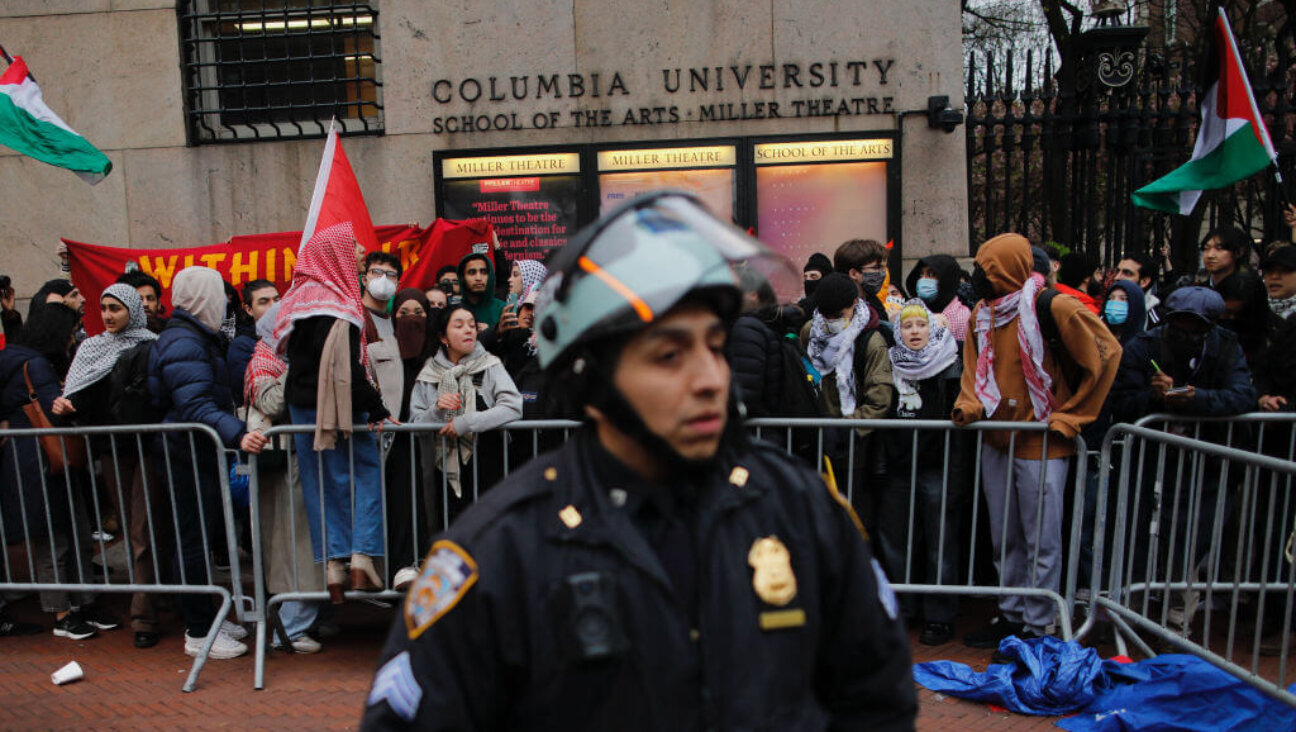Exhibit Sheds Light on Nazi Suppression Of Free Speech
WASHINGTON — For the past decade, the United States Holocaust Memorial Museum has focused on the Nazi campaign to persecute and murder Europe’s Jews. But this week, the museum marked its 10th anniversary by opening an exhibition on a topic that is not explicitly and specifically Jewish: Hitler’s war on free thought and free speech.
“I was a bit concerned about it,” said Stephen Goodell, the museum’s director of exhibitions and co-curator of the current show. “But as I worked through it, it became clear that this is actually very, very Jewish.”
While the connection between burning books and genocide may not be obvious, he said, the suppression of free speech in Hitler’s Germany was indeed linked to the later murder of millions of Jews.
“What does this have to do with the Holocaust?” Goodell asked at a press preview of the exhibition, titled “Fighting the Fires of Hate: America and the Nazi Book-Burnings.”
“It is one milestone on the twisted road to Auschwitz,” Goodell said. “It’s the suppression of culture, the decapitation of the intellectuals, the forced uniformity that becomes the lock step, that becomes the goose step.”
“There are a lot of ways to understand the conditions that allowed the genocide of Jews,” Goodell added. “You don’t have to tell the story of the killing of Jews over and over again. You have to frame it and provide the context to it.”
Seventy years ago, in May 1933, only four months after the onset of the Nazi revolution, tens of thousands of German students gathered on college campuses across Germany. Carrying torches, they marched toward large bonfires, where they burned about 25,000 volumes of “un-German” books. The book-burnings, which were staged as media events on May 10, caused passionate public outrage worldwide, particularly among intellectuals.
In the United States, Nazi book-burnings became a symbol of America’s position as the land of intellectual freedom. Since then, book-burning has become broadly synonymous in the United States with intellectual intolerance, censorship and suppression of free thought. This American response to book-burning during the last 70 years receives nearly as much space in the exhibition as the Nazi anti-intellectual campaign itself. This is a part of the museum’s attempt to “de-parochialize” the Holocaust, Goodell said, to make the Holocaust relevant to Americans and broaden the way it is perceived.
“Fighting the Fires of Hate” starts with a copy of Adolf Hitler’s “Mein Kampf” and ends with a photo of an American protester at a 2001 burning of Harry Potter books at a small-town church in New Mexico; the demonstrator is wearing a swastika and a Hitler-like mustache, holding a hand-painted sign that says “Heil ignorance.” “We wanted to show that symbolic book-burnings still take place today, whether it is Harry Potter or Salman Rushdie’s ‘Satanic Verses,’” Goodell said.
Copies of memos sent to university campuses in April 1933 by the German Student Association, with detailed instructions for preparation of the upcoming book-burnings, are included in the exhibit. Also on display are portions of the list of 346 authors who had been blacklisted by May 1933 and thick lists — published semi-annually thereafter under the Nazi regime — of banned books.
The exhibition, which will travel throughout the United States later this year, strongly emphasizes the comprehensive media coverage of these events at the time, both in Germany and in the United States. Newsweek called the events a “holocaust of books” and Time magazine coined the term “bibliocaust.” Writers who blasted the book-burnings mentioned Heinrich Heine’s 19th-century prophetic warning that “where one burns books, one soon burns people.” One cartoonist drew books piled for burning next to a pile of people at the stake.
American coverage of the book-burnings was extensive. But when the systematic genocide at concentration camp crematoria became known in the United States several years later, it was not as well covered. Coverage of similar intensity, said Goodell and exhibition co-curator Guy Stern, could have changed the Nazi death campaign and saved many lives.
“Throughout the war, the government used book-burnings to help define the nature of the enemy to the American public,” said Sara Bloomfield, the museum’s director. “Unfortunately, the systematic murder of Europe’s Jews was not seen as a compelling case for fighting Nazism.”
Later this year, the museum will open two more major exhibitions to mark its 10th anniversary: one displaying the original writings of Anne Frank — for the first time in the United States — and one commemorating the Jewish children who were hidden and saved during the Holocaust.

I hope you appreciated this article. Before you go, I’d like to ask you to please support the Forward’s award-winning journalism this Passover.
In this age of misinformation, our work is needed like never before. We report on the news that matters most to American Jews, driven by truth, not ideology.
At a time when newsrooms are closing or cutting back, the Forward has removed its paywall. That means for the first time in our 126-year history, Forward journalism is free to everyone, everywhere. With an ongoing war, rising antisemitism, and a flood of disinformation that may affect the upcoming election, we believe that free and open access to Jewish journalism is imperative.
Readers like you make it all possible. Right now, we’re in the middle of our Passover Pledge Drive and we still need 300 people to step up and make a gift to sustain our trustworthy, independent journalism.
Make a gift of any size and become a Forward member today. You’ll support our mission to tell the American Jewish story fully and fairly.
— Rachel Fishman Feddersen, Publisher and CEO
Join our mission to tell the Jewish story fully and fairly.
Only 300 more gifts needed by April 30
























